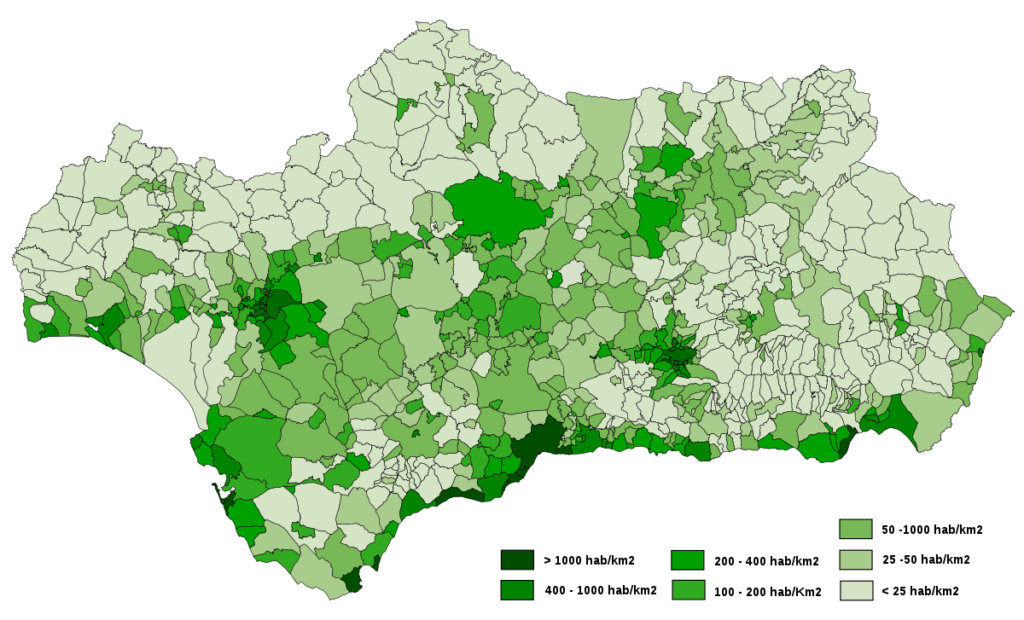Current situation

Andalusia (NUTS 2 code ES61) is one of the most relevant agricultural areas in Spain and also in Europe. It accounts for 87,597 km2 and a population of 8.4 million people, and it is the fourth largest region in the EU-28. Agriculture is key in the region accounting for 9,280 M€ of GVA and employing 268,000 people. Andalusia is the main olive oil world producer with ~1.5 M ha of dedicated area producing 1.1 million tons of product per year. The region is considered as a transition one under the 2014/99/EU directive.
The selected instrument is the “M11: Ecologic agriculture”, which is included in the national programme (2014ES06RDNF001) and detailed in the regional development plan (2014ES06RDRP001) for the period 2014-2020. It is derived from Article 29 of the 1305/2013 EAFRD regulation. This measure aims to increase the presence of ecological exploitations, contributing to the fourth national priority “Restore, preserve and improve ecosystems related to the agriculture and forestry”. In particular, the measure has instruments for promoting new ecological exploitations and for maintaining existing exploitations as well. In addition, the measure is divided into two sub-measures, one for olive production and other for the rest of exploitations.
Improvement potential
This AGRICORE use case will analyse the M11 measure influence on Andalusia’s olive sector, focusing on its environmental and climate impacts. The ex-post analysis will be done for the period 2014 to 2017 and the ex-ante analysis will be done for the period 2018-2020. To that end, AGRICORE will use several databases including FADN, FSS, Aquastat, UNIFCC, LUCAS, SIGPAC, the national Spanish Statistical Office (INE), ESYRCE and regional/municipal sources. In addition, participatory research conducted among policy makers, supervising organisms, farmers and agriculture associations will be done for complementing the gaps in the recovered information. The biophysical models to be used will include a dynamic growth model for the olive tree aimed to the calculation of production indicators and to the quantification of the related environmental and ecosystem service impacts.
Summary of the results
The aim was to fill in all the information gaps through a survey campaign with information directly related to the project interest. The information gaps were based on the following points:
1. Personal Data and position distribution
The average age of the farmers is around 60-65 years old, and more than 35% are women. Regarding the educational level and the role of the farmer in his/her olive exploitation, there is a 50% equally distributed between primary and secondary education. [Figure 1]
On the other hand, the situation of the farmers was analysed in terms of their position and work on the farm. More than 80% of the respondents are the owners of the farms and more than 50% are involved in management and administration and technical work on the farm. [Figure 2]
Figure 2
2. Cultivated crop
The farms under study had different characteristics from each other in terms of territory, with 74% dedicated to the production of organic olive groves. They were also classified according to the type of irrigation, the age of the tree, the slope of the land and the percentage of erosion on the farm.
3. Production
We evaluated and quantified whether organic olive farms are profitable, observing an average production of 1000-2000 kg/ha with more than 88% destined for mill oil production. [Figure 3]
4. Acceptance of the measure
It was analysed whether farmers were considering abandoning organic farming on their farm in the future, obtaining a negative answer from 87% of respondents. For those who did, the main reason for abandonment was economic-financial reasons (63%).
5. Farmer’s Knowledge
There is a great lack of knowledge about the land categories asked to the farmer-owners, with more than 50% of the answers being answers from the farm technicians or not answered. Only 30-40% of farmer-owners know whether their farm belongs to these categories.
6. Innovation & Risk aversion
Two “Multi-item” scales were used, one with 10 types of innovations and the other with 16 risk management strategies. Regarding the first one, a large number of farmers were interested in training courses, the use of mobile applications and the use of integrated equipment; they also attached considerable importance to actions to combat erosion and control pests or diseases. However, only 10% of farmers invest in innovations. Regarding the second one, the most relevant strategies and those in which they also invest are take-off farm work, producing at lowest possible cost and hiring agronomical consultancies.


